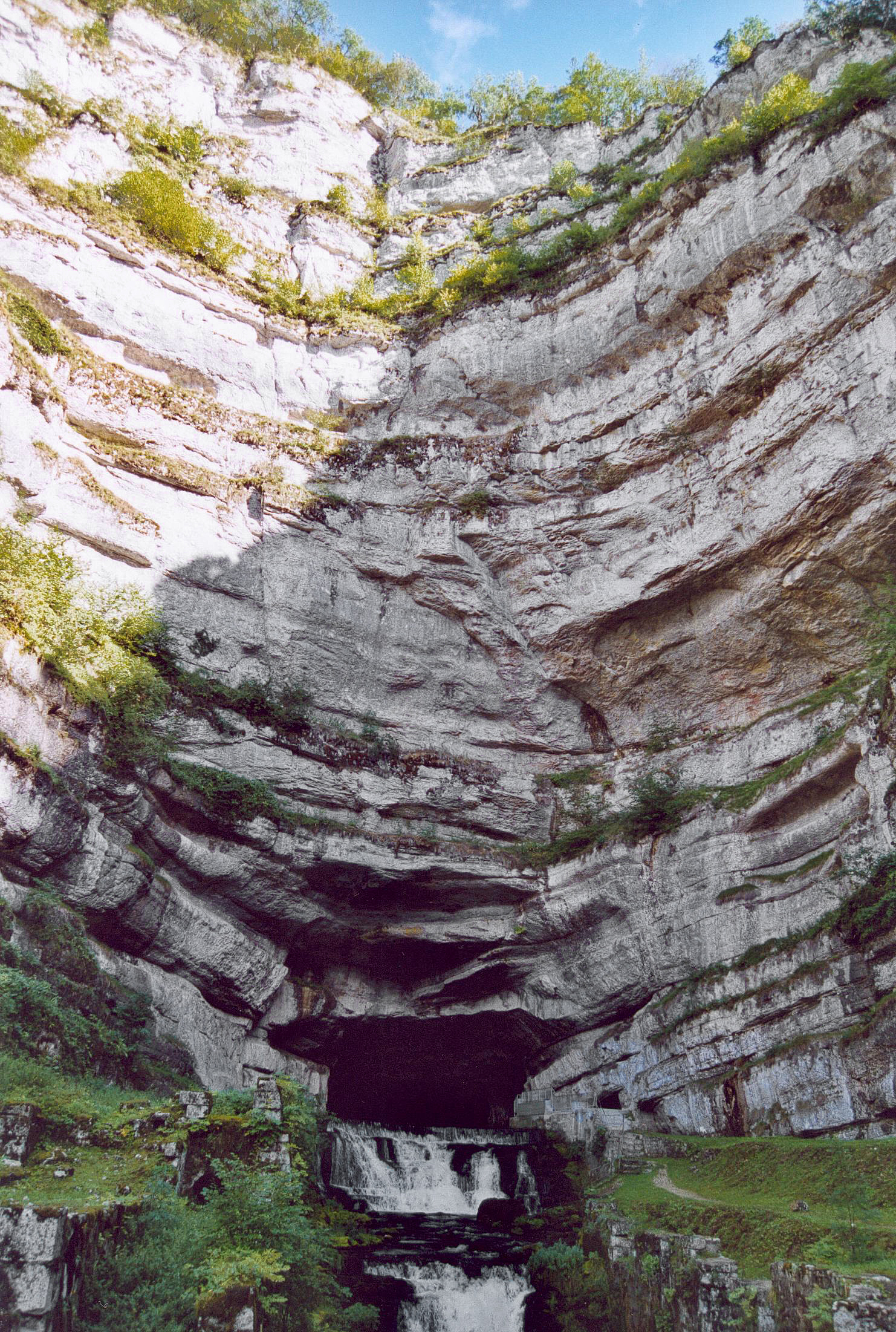Klinge (landform) on:
[Wikipedia]
[Google]
[Amazon]
''Klingen'' are small, narrow, steep V-shaped valleys formed by the erosive forces of water and suspended abrasive particles,
 In the regions of the Swabian and Franconian Jura, ''klingen'' are less common than in the hills in front of them in the South German Scarplands.
At the strata boundaries of steep Jurassic rock faces – such as those of the
In the regions of the Swabian and Franconian Jura, ''klingen'' are less common than in the hills in front of them in the South German Scarplands.
At the strata boundaries of steep Jurassic rock faces – such as those of the
gravel
Gravel is a loose aggregation of rock fragments. Gravel occurs naturally throughout the world as a result of sedimentary and erosive geologic processes; it is also produced in large quantities commercially as crushed stone.
Gravel is classifi ...
and pebble
A pebble is a clast of rock with a particle size of based on the Udden-Wentworth scale of sedimentology. Pebbles are generally considered larger than granules ( in diameter) and smaller than cobbles ( in diameter). A rock made predominant ...
s. They are usually side valleys without a discernible valley floor
A valley is an elongated low area often running between hills or mountains, which will typically contain a river or stream running from one end to the other. Most valleys are formed by erosion of the land surface by rivers or streams ove ...
that lead into a main valley. Further incision through ablation and headward erosion is mainly caused by the waters of small, steep, fast flowing, streams or becks and their processes are still visible today. Erosion, sedimentation and transport are mutually dependent. The term ''klinge'' is German and is used to refer to European stream landforms, especially in southern Germany and eastern France.
Name
The description ''klinge'' for small V-shaped valleys may derive from the noise of the streams when in spate (''klingen'' in German means "ring" "clang" or "jingle"). Another interpretation maintains that the little valleys were supposed to be cut by blades ("Klinge" = blade). In the whole of southwest Germany, including the Swabian and Franconian Jura, this sort of valley is known as a ''Klinge'', ''Tobel'' or Klamm. These valleys are habitats for thecommon midwife toad
The common midwife toad (''Alytes obstetricans'') is a species of midwife frog in the family Alytidae (formerly Discoglossidae). It is found in Belgium, France, Germany, Luxembourg, the Netherlands, Portugal, Spain, Switzerland, and the United K ...
, which, in many places, is also called the ''Steinklinke'' ("Stone klinke") or ''Klinkerkröte'' ("Klinker Toad"), its spawning waters are thus referred to as ''Klingelsiepen, Klingelborn, Klingelschlade, Klingelpütt'' or ''Glockenteich'', all names that refer to its very characteristic call.
In northwest Germany such erosion valleys are called ''Spiepen, Siefen'' or ''Seif'', or'' Sieke''.
Geomorphology
''Klingen'' occur especially in the small catchment areas of heavily forested low mountain regions, carved out by erosion processes even today, where, as a result of the alternating layers of porous sandstones or limestones on top of impervious clays andmarl
Marl is an earthy material rich in carbonate minerals, clays, and silt. When hardened into rock, this becomes marlstone. It is formed in marine or freshwater environments, often through the activities of algae.
Marl makes up the lower part o ...
s, small springs arise. Hillsides are often undercut which may trigger small or medium-sized landslips or even mudflows. In southwestern Germany these processes occur especially in the small, steep-sided valley that flow into the Rhine system.
In harder, jointed (and therefore pervious) rocks, landslips are rarer. Instead rockfalls or even collapses occur on massifs and rock faces. These processes are encouraged in the winter months mainly by frost weathering. Especially susceptible are steep rock faces in Muschelkalk and White Jurassic
The White Jurassic or White Jura (german: Weißer Jura or ''Weißjura'') in earth history refers to the upper of the three lithostratigraphic units of the South German Jurassic, the latter being understood not as a geographical, but a geological t ...
.Joachim Eberle u. a.: ''Deutschlands Süden – vom Erdmittelalter zur Gegenwart.'' Spektrum-Akademischer Verlag, Heidelberg, 2007, , p. 176.
Distribution
 In the regions of the Swabian and Franconian Jura, ''klingen'' are less common than in the hills in front of them in the South German Scarplands.
At the strata boundaries of steep Jurassic rock faces – such as those of the
In the regions of the Swabian and Franconian Jura, ''klingen'' are less common than in the hills in front of them in the South German Scarplands.
At the strata boundaries of steep Jurassic rock faces – such as those of the Albtrauf
The term Albtrauf (Alp escarpment) refers to the northwest facing escarpment of the Swabian Alps, situated in Baden-Württemberg and Bavaria. It is the most distinctive stepped slope within the alpine region of the South German Scarplands, leadi ...
or the Swiss-French Jura – strong permanent or periodic karst springs have scoured out steep, often concave, vertical rock niches, for example: the Teufelsklinge near Heubach
Heubach is a town in the Ostalbkreis district, in Baden-Württemberg, Germany. It is located 10 km east of Schwäbisch Gmünd, and 13 km southwest of Aalen. The town finds itself at the edge of the Rems River Valley and at the base o ...
(on the ''Albtrauf'' of the ''Ostalb'') and the Résurgence in the French Jura (source of the Loue).
Literature
* Joachim Eberle et al.: ''Deutschlands Süden – vom Erdmittelalter zur Gegenwart.'' Spektrum-Akademischer Verlag, Heidelberg, 2007, . * Georg Wagner: ''Einführung in die Erd- und Landschaftsgeschichte mit besonderer Berücksichtigung Süddeutschlands.'' Hohenlohesche Buchhandlung Ferdinand Rau, Öhringen, 1960.References
{{Reflist Valleys